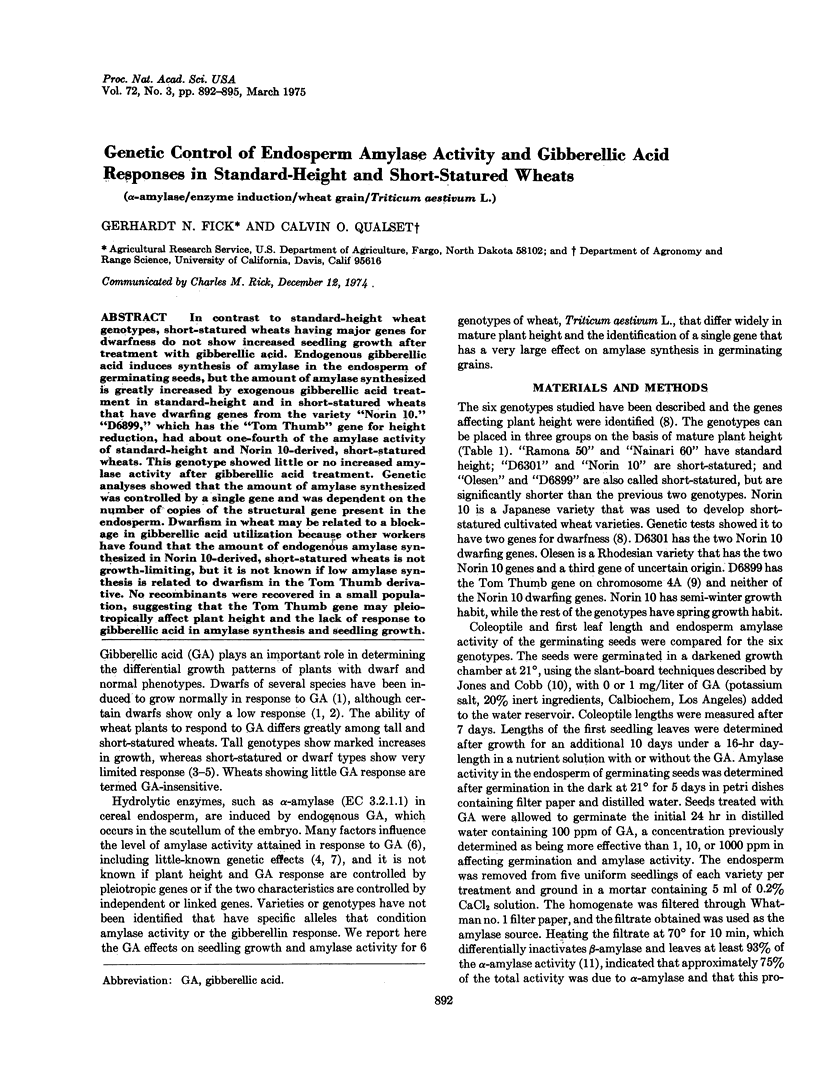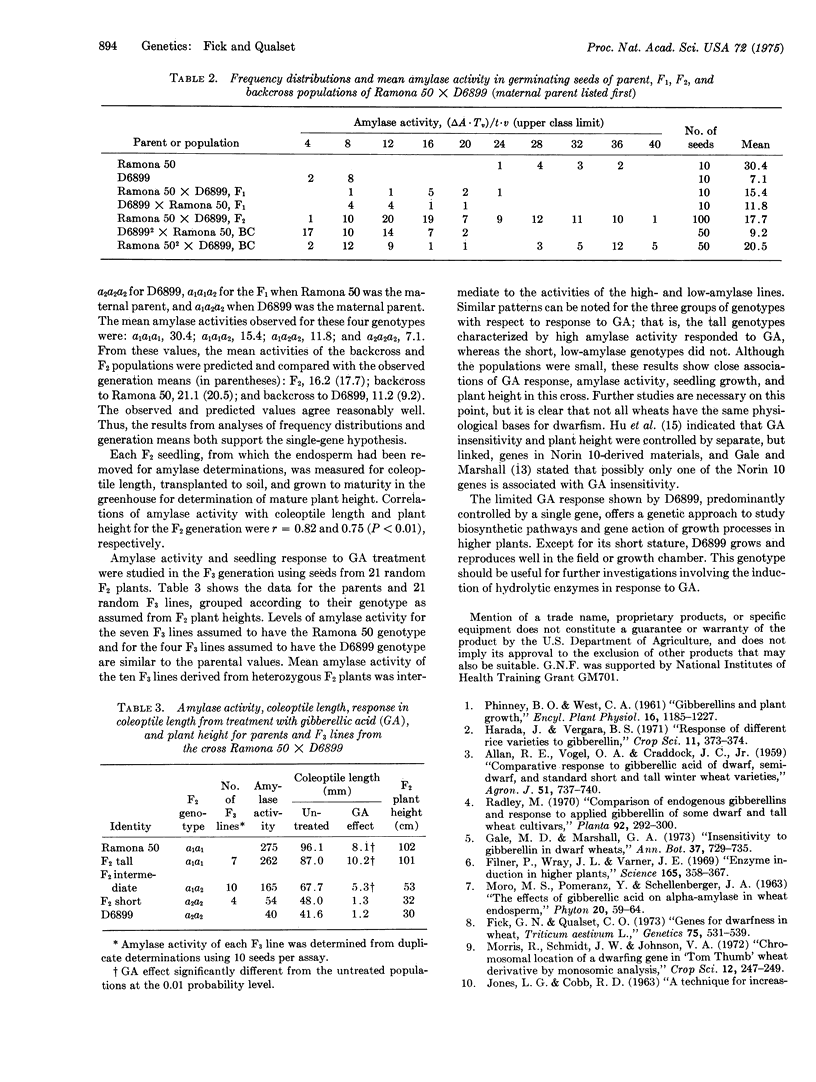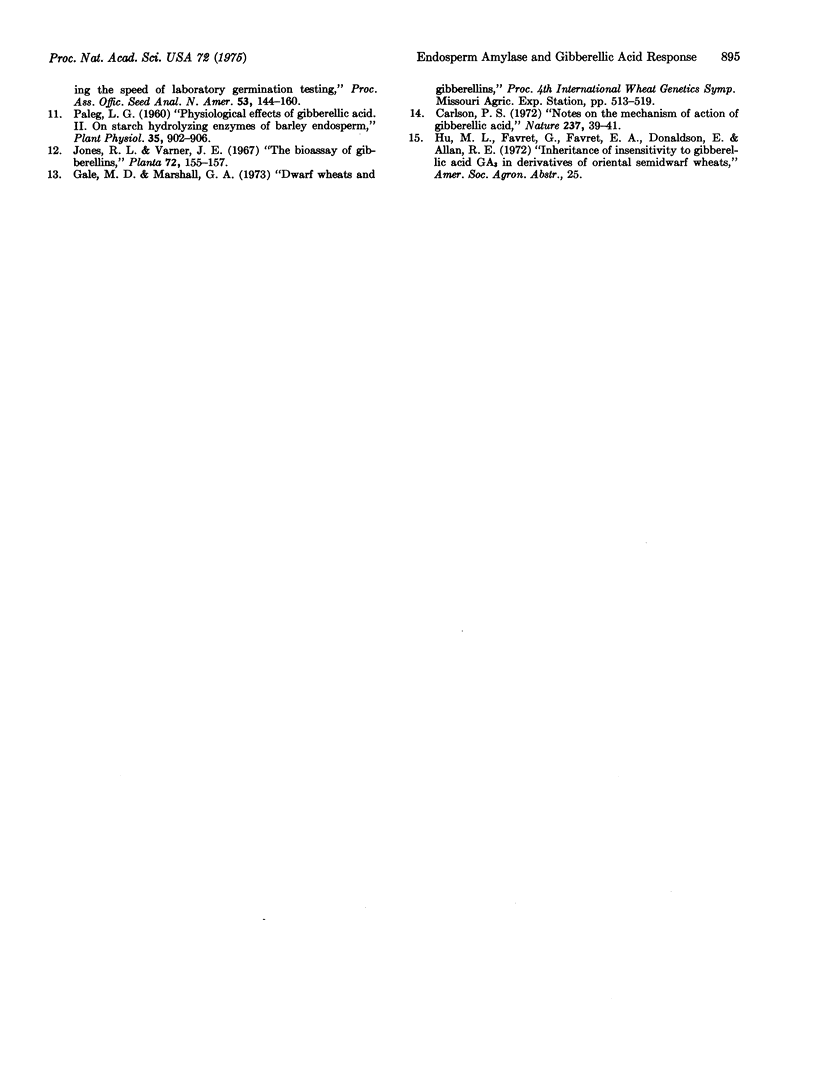Abstract
In contrast to standard-height wheat genotypes, short-statured wheats having major genes for dwarfness do not show increased seedling growth after treatment with gibberellic acid. Endogenous gibberellic acid induces synthesis of amylase in the endosperm of germinating seeds, but the amount of amylase synthesized is greatly increased by exogenous gibberellic acid treatment in standard-height and in short-statured wheats that have dwarfing genes from the variety “Norin 10.” “D6899,” which has the “Tom Thumb” gene for height reduction, had about one-fourth of the amylase activity of standard-height and Norin 10-derived, short-statured wheats. This genotype showed little or no increased amylase activity after gibberellic acid treatment. Genetic analyses showed that the amount of amylase synthesized was controlled by a single gene and was dependent on the number of copies of the structural gene present in the endosperm. Dwarfism in wheat may be related to a blockage in gibberellic acid utilization because other workers have found that the amount of endogenous amylase synthesized in Norin 10-derived, short-statured wheats is not growth-limiting, but it is not known if low amylase synthesis is related to dwarfism in the Tom Thumb derivative. No recombinants were recovered in a small population, suggesting that the Tom Thumb gene may pleiotropically affect plant height and the lack of response to gibberellic acid in amylase synthesis and seedling growth.
Keywords: α-amylase, enzyme induction, wheat grain, Triticum aestivum L.
Full text
PDF



Selected References
These references are in PubMed. This may not be the complete list of references from this article.
- Carlson P. S. Notes on the mechanism of action of gibberellic acid. Nat New Biol. 1972 May 10;237(71):39–41. doi: 10.1038/newbio237039a0. [DOI] [PubMed] [Google Scholar]
- Fick G. N., Qualset C. O. Genes for Dwarfness in Wheat, TRITICUM AESTIVUM L. Genetics. 1973 Nov;75(3):531–539. doi: 10.1093/genetics/75.3.531. [DOI] [PMC free article] [PubMed] [Google Scholar]
- Filner P., Varner J. E., Wray J. L. Environmental or developmental changes cause many enzyme activities of higher plants to rise or fall. Science. 1969 Jul 25;165(3891):358–367. doi: 10.1126/science.165.3891.358. [DOI] [PubMed] [Google Scholar]
- Paleg L. G. Physiological Effects of Gibberellic Acid. II. On Starch Hydrolyzing Enzymes of Barley Endosperm. Plant Physiol. 1960 Nov;35(6):902–906. doi: 10.1104/pp.35.6.902. [DOI] [PMC free article] [PubMed] [Google Scholar]


